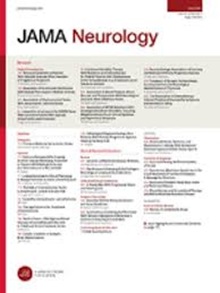Regional Differences in Dementia Incidence Among US Veterans
IF 21.3
1区 医学
Q1 CLINICAL NEUROLOGY
引用次数: 0
Abstract
ImportancePrior studies of dementia incidence in the US often focused on narrow regions, leaving regional variation unclear and potential explanatory factors unknown.ObjectiveTo investigate geographic differences in dementia incidence across the US among older adults enrolled in the Veterans Health Administration (VHA) system.Design, Setting, and PopulationCohort study spanning October 1999 to September 2021 with a mean follow-up time of 12.6 years. Data were analyzed from October 2023 to September 2024 among a random sample of 1 268 599 dementia-free veterans aged 65 years or older with available zip code information in locations across the US. We excluded 22 512 with missing zip codes, 265 850 with no follow-up, and 37 370 with prevalent dementia.ExposureGeographical region categories across the US were defined using the Centers for Disease Control and Prevention (CDC) National Center for Chronic Disease Prevention and Health Promotion definition, which divides the US into 10 regions, each composed of 4 to 7 states.Main Outcomes and MeasuresDementia diagnoses were based on美国退伍军人痴呆发病率的地区差异
重要性先前对美国痴呆发病率的研究往往集中在狭窄的区域,导致区域差异不明确,潜在的解释因素未知。目的调查在美国退伍军人健康管理局(VHA)系统登记的老年人痴呆发病率的地理差异。设计、环境和人群队列研究时间跨度为1999年10月至2021年9月,平均随访时间为12.6年。研究人员从2023年10月至2024年9月随机抽取了1268599名65岁或以上的无痴呆症退伍军人,并对他们进行了数据分析,这些退伍军人有美国各地的邮政编码信息。我们排除了邮政编码缺失的22512人,没有随访的266550人,以及流行性痴呆的37370人。美国各地的地理区域类别是根据疾病控制和预防中心(CDC)国家慢性病预防和健康促进中心的定义定义的,该定义将美国分为10个地区,每个地区由4到7个州组成。痴呆诊断基于国际疾病分类代码,并根据CDC区域内的邮政编码进行计算。使用泊松回归模型计算每1000人年的痴呆发病率,并使用几个协变量模型评估发病率比的区域差异。结果1268599名参与者(平均年龄73.9 [SD, 6.1]岁;n = 25335[2%]女性),每1000人年痴呆发病率在大西洋中部最低(11.2;95% CI, 11.1-11.4),东南部最高(14.0;95% ci, 13.8-14.2)。与大西洋中部地区相比,经人口统计学调整后发病率最高的地区包括东南部(发病率比[RR], 1.25;95% CI, 1.22-1.28),西北地区(RR, 1.23;95% CI, 1.20-1.27),落基山脉(RR, 1.23;95% CI, 1.20-1.26),南方(RR, 1.18;95% CI, 1.15-1.20),中西部地区(RR, 1.12;95% CI, 1.09-1.14)和南大西洋(RR, 1.12;95% ci, 1.10-1.14);其余地区的发病率相似(差异为10%)。对农村和心血管合并症的额外调整以及对竞争死亡风险的考虑也产生了类似的结果。结论和相关性在VHA的老年人中,痴呆发病率在美国各地区差异显著,独立于关键协变量。这些发现强调了有针对性的卫生保健规划、公共卫生干预和政策制定的必要性。
本文章由计算机程序翻译,如有差异,请以英文原文为准。
求助全文
约1分钟内获得全文
求助全文
来源期刊

JAMA neurology
CLINICAL NEUROLOGY-
CiteScore
41.90
自引率
1.70%
发文量
250
期刊介绍:
JAMA Neurology is an international peer-reviewed journal for physicians caring for people with neurologic disorders and those interested in the structure and function of the normal and diseased nervous system. The Archives of Neurology & Psychiatry began publication in 1919 and, in 1959, became 2 separate journals: Archives of Neurology and Archives of General Psychiatry. In 2013, their names changed to JAMA Neurology and JAMA Psychiatry, respectively. JAMA Neurology is a member of the JAMA Network, a consortium of peer-reviewed, general medical and specialty publications.
 求助内容:
求助内容: 应助结果提醒方式:
应助结果提醒方式:


